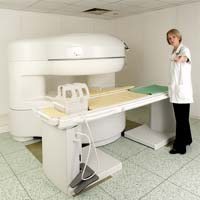FDG/PET Best for Mesothelioma Diagnosis and Prognosis

When it comes to diagnosing mesothelioma and predicting patient prognosis, Positron Emission Tomography (PET) using a radioactive tracer may be the most effective imaging modality. That’s the finding of a new study out of Japan.
Mesothelioma is a fast-growing cancer that starts on the mesothelial membranes which line the chest cavity or wrap around the lungs and heart. It is caused by past exposure to asbestos, most often in an industrial setting. The greater the level of exposure, the greater the likelihood that mesothelioma will occur. Because it is highly resistant to conventional treatments, early diagnosis is critical.
Unfortunately, mesothelioma can also be challenging to diagnose. If patient history and symptoms suggest mesothelioma, imaging modalities like computed tomography (CT) and X-rays can help determine tumor location, shape and volume. But CT is limited in its ability to distinguish malignant mesothelioma from benign tumors or pleural thickening. For this, a growing number of centers now use PET scanning along with the radioactive tracer molecule 18-fluorodeoxyglucose (FDG).
Unlike other imaging modalities, FDG/PET scans have the ability to detect changes in metabolic activity that can be an indication of cancer. After FDG is injected into a patient, the PET scanner can form images of its distribution around the body. Cancer cells have a much higher rate of ‘uptake’, called Standard Uptake Value or SUV, of the FDG than do healthy cells. A recent Japanese study of the technique confirmed that patients with malignant mesothelioma have much higher SUVmax levels than patients who have non-malignant pleural disease.
In fact, the new study, published in Experimental and Therapeutic Medicine, showed that among the 47 mesothelioma patients tested, those who had the highest SUVmax levels also had the lowest odds of long-term survival. “Our data suggest that SUVmax levels are useful as an aid for diagnosis and prognosis of malignant pleural mesothelioma,” the authors concluded in a summary of their findings.
FDG/PET is frequently combined with CT and blood biomarker tests, as well as clinical symptoms and history of asbestos exposure, to confirm mesothelioma, determine prognosis, and formulate a treatment plan.
Sources:





